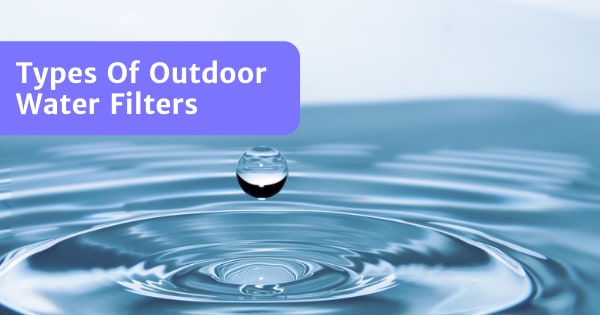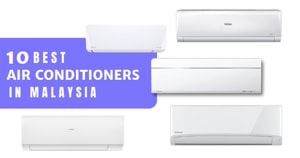Struggling to figure out which type of outdoor water filter is best for your home?
Replacing or getting a new outdoor water filter can be quite tedious, especially if you don’t know what to look for.
No worries, read on to know more about the types of outdoor water filters available, and which ones are the best suited for your household needs!
Table Of Contents:
- What Are Outdoor Water Filters?
- Benefits Of Outdoor Water Filters
- Types Of Outdoor Water Filters
- Cartridge Or Backwash-Based Water Filter?
- Which Outdoor Water Filter Is Best?
1. What Are Outdoor Water Filters?
Outdoor water filters, or Point-Of-Entry (POE) filters, are water filters installed at the main pipeline that supplies water to your entire house.
This is in comparison to indoor, or Point-Of-Use filters¸ which only filter out at a single point, such as a kitchen tap or showerhead.
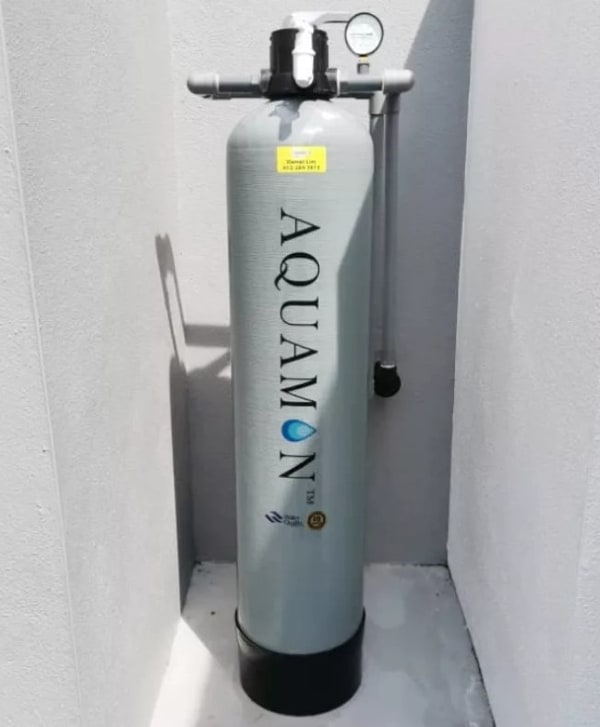
2. Benefits of Outdoor Water Filters
Installing an outdoor water filter in your home confers several benefits, from removing contaminants to longer-lasting water fixtures and appliances.
A more comprehensive list of benefits can be found below:
- Removes Contaminants: Most series of outdoor water filters are designed to remove any combination of physical, chemical, or biological contaminants in the water.
- Reduced Sediment, Dirt, and Limescale build-up: Improves the lifespan of water-based household fixtures such as washing machines, shower heaters, and tap fixtures.
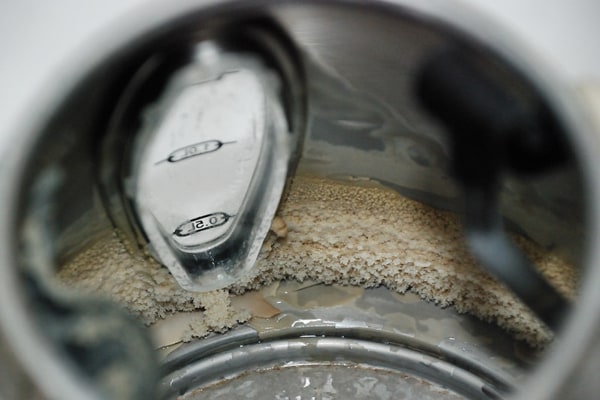
- Reduces Excessive Chlorine: An outdoor water filter can remove the odor and taste that’s associated with chlorinated water, bringing it down to safer levels.
- Safe Drinking Water: Ensures that the water you drink is free of the most common contaminants.
- Healthier Baths and Showers: Reduces symptoms of skin irritation or diseases caused by showering in unfiltered water.
- Easy Installation: Outdoor water filters simply require you to install the unit at the main water supply line, without any additions.
- Minimal Operational Costs: Simply backwash the unit (average once a week), or replace the filter cartridge as necessary.
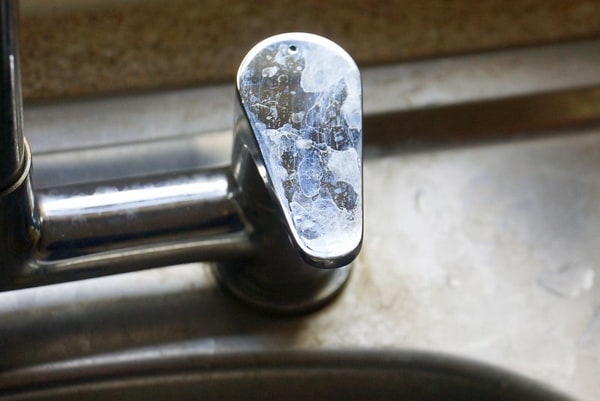
3. Types Of Outdoor Water Filters
Filtration systems aside, there are mainly 2 types of outdoor water filters you’ll find on the market, namely Multimedia/Sand filters, and Membrane filters.
You can read more about them below, and the following video is a great introduction to the type of outdoor water filters available:
3.1. Multimedia Sand
If you’ve ever seen a large cylindrical vessel near a pipeline in your residential area, chances are it’s a multimedia sand filter.
Multimedia Sand filters are the most common outdoor water filter available, owning to how inexpensive and low-maintenance they are.
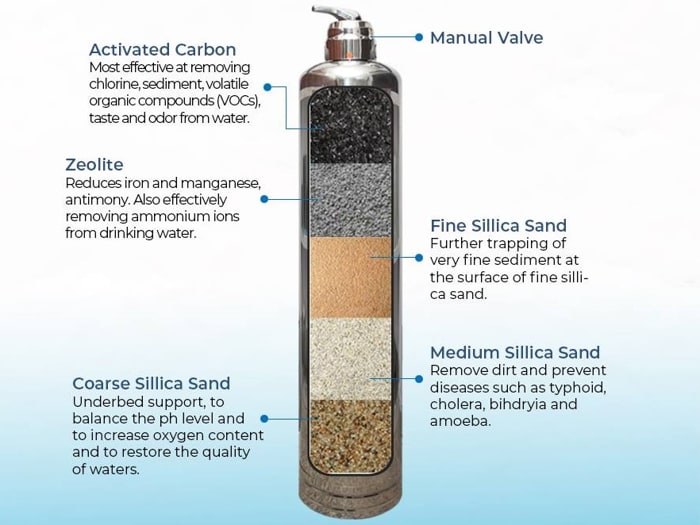
They usually come in 2 distinct body-works, namely Fibre Reinforced Plastic (FRP) or stainless-steel cylinders.
FRP water filters are cheaper than their stainless-steel counterparts, although they tend to degrade a lot quicker with direct exposure to sunlight and rain. Eventually cracking after 3 – 4 years.
This is why stainless-steel cylinders, given their higher durability, are the more optimal choice for outdoor water filters.
As for the filtration media itself, it’s usually a combination of 4-6 various layers, ranging from zeolite, carbon (often activated), silica fine sand, coarse sand, and gravel.
Due to their size and bulkiness, it can be extremely tedious to install one of these filters yourself.
As such, it’s usually best to let a professional install these outdoor water filters for you, with some companies even offering free installation alongside their product.
General maintenance on these filters is simple but frequent; you need to backwash the system as often as the manufacturers dictate.
This is usually a weekly or monthly occurrence depending on how dirty your water supply is.
You will also need to eventually replace the media present in the filter. Which can range anywhere between 5 to 10 years depending on the filter media you’re using.
Pros
- Filters out most prominent impurities (rust, dirt, sediment, etc)
- Filter media can last for years (5 – 10 years)
- Water pressured is mostly unaffected
- Durable
- Low overall maintenance costs
- Cheaper upfront costs.
Cons
- Requires frequent and long back-washing cycles
- Lower micron rating than membrane filters (Only 10-25 microns)
- Large size takes up a lot of space.
3.2. Membrane Filters
The other type of outdoor water filter:
Membrane filters use a thin, semi-permeable barrier, which separates contaminants and harmful particles from the water entering your home.
The 3 main filtration systems that use membrane filters are Reverse osmosis (RO), ultrafiltration (UF), and nanofiltration (NF).

Although for outdoor filters, ultrafiltration is most commonly used. As RO and NF are pricier and more inefficient to implement as a POE filter.
Ultrafiltration membranes are simply very fine mechanical filters able to remove sediments and particulates up to 0.0025 microns.
While similar to an outdoor multimedia sand filter, membrane filters are much more compact and take up a lot less space than their bulkier counterparts.
You have to backwash and flush membrane filters as well, although the time required to backwash membranes filters are significantly shorter than with sand-based filters.
However, you have to replace membrane filters a lot more frequently (about once every year). Because particulates and sediments build up much quicker in membrane filters.
For a more in-depth look at membrane filters, have a look at this article by Fresh Water Systems.
Pros
- Very high filtration quality (up to 0.0025 microns)
- Compact size
- Shorter backwash rotations
Cons
- Higher upfront costs
- Higher operation costs
- More frequent filter replacements
4. Cartridge or Backwash-Based Water Filter?
If you find back-washing your outdoor filter every week or so a tedious affair:
You may be happy to learn about cartridge-based outdoor water filters, such as 3M’s Aqua Pure outdoor water filter series.
Cartridge filters offer the same filtration quality without having to backwash them weekly.
Cartridge-based filters are also more compact, and can easily fit into a condo or apartment, whereas a larger outdoor filter can’t.
They’re also very easy to replace; all you need to do is to replace the old cartridge with a new one, without any specific tools.
The downside with cartridge-based filters is that they tend to degrade faster than your backwash-based option, as contaminants aren’t being removed from the filter system.
This means you have to replace the cartridge every 12 to 18 months, in comparison to multimedia filters which can last you up to 10 years.
Replacement cartridge filters are also exceptionally pricey, costing around RM400 to RM600 per filter.
Furthermore, in many places, there’s no sustainable way to get rid of old filter cartridges. And they will most likely end up in a landfill.
In the end, it’s mostly a convenience–over–cost debate when choosing to go for a cartridge filter:
You’ll save plenty of time by not doing weekly back-washes, but it will cost you extra in the long run.
5. Which Outdoor Water Filter Is Best?
The best type of outdoor water filter for you is mostly dependent on your overall living situation and budget, but the main things to consider are:
- Budget – How much are you willing to spend?
- Size – Do you have enough space to fit the water filter in question?
- Multimedia or Membrane – Are you looking for durability or a more effective filtration system?
- Cartridge or Backwash – Are you willing to pay for convenience, or are you okay with back-washing the system on a regular basis?
- Upkeep Costs – The overall costs of replacing the filter media, membrane, or cartridge (frequency X purchasing costs)
For more specific suggestions, have a look at our guide on choosing the right water filter for you, where we have more in-depth into what you should be looking for.
Conclusion
All-in-all, the main takeaway from this is that there are 2 types of outdoor water filters (multimedia filter and membrane filter) with 2 different upkeep systems (backwash or cartridge-based).
What you choose depends on your personal needs and the quality of the water in your area, so be sure to do adequate research before purchasing one!
Note: You can check out our article on the 11 best water filters available in Malaysia, where we’ve conveniently listed the best outdoor (and indoor) water filters on the market!

